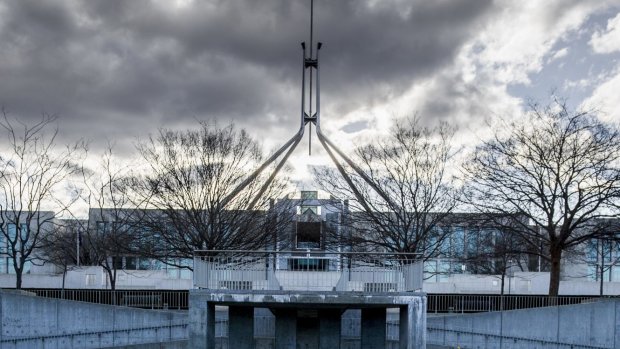The release of the new Productivity Commission draft report into the regulation of agriculture confirms that Tasmanian farmers are shackled by costly and unnecessary red tape.

While Tasmania contributes nearly $1.5 billion in agricultural commodity production each year, it is held back by governments ignoring regulatory design principles.
The idea the benefits of regulation must outweigh the costs is trumped by special interests and bureaucracy.
Every day Australian farmers compete in a global market — about two thirds of Australia's agricultural produce is exported — which makes them highly sensitive to the costs of regulation.
Farmers cannot afford to waste time filling in permits and approvals rather than remaining competitive.
A 2013 report by Stenning and Associates found that in the Tasmanian agriculture, forestry and fishing industries, those businesses that employ staff spend a remarkable 19.9 hours per week on meeting regulatory requirements.
That is a huge cost.
My recent research estimated that across all sectors red tape costs Australia $176 billion a year in foregone economic output.
Red tape costs us more each year than we pay in income tax.
Many concerns are covered in the report that deserve swift attention: relaxing foreign investment restrictions in line with other industries, holding back the continual creep of environmental regulations, and anti-competitive coastal shipping regulation.
As the report recommends, the threshold for foreign investment review should be increased in line with other industries — including telecommunications, transport and defence — to $252 million.
The Australian economy is small, open, and heavily reliant on investment to fund the shortfall in national savings — we simply cannot afford to stymie international investor interest.
Preventing voluntary investment is an attack on the fundamental right of farmers to sell their own private land to whom they wish, for the highest price they can achieve.
Many criticisms rallied against this change are unfounded. For instance, when foreigners purchase Australian land they do not bring with them their own laws — Australian laws and regulations, including labour laws, still apply.
Another long-running issue for farmers has been environmental legislation, especially its capture by the growing political sentiment that no harm in the environment can be tolerated.
Native vegetation clearing rules cause unnecessary headaches for farmers, especially the widespread inconsistencies between different levels of government — what is approved at one level of government may be rejected by another.
Regulatory uncertainty makes it difficult for farmers to manage their land.
Rather than government heaping more stringent rules on landowners with little concern for the cost, the PC report recommends governments develop market-based solutions.
That includes the possibility for governments to buy environmental services from existing landholders — a vital change not only for native vegetation but more broadly for regulatory design.
When governments must pay for their policy objectives this will slow down new red tape. This would be welcome recognition that government restrictions on land clearing are an assault on property rights, which must be adequately compensated.
Anti-competitive coastal shipping legislation — where foreign ships face government-backed barriers to entry — is particularly costly for Tasmania.
For instance, the Tasmanian Farmers and Graziers Association claims that the route across the Bass Strait is the most expensive route in the world.
With 99 per cent of freight volume in and out of Tasmania occurring over sea, this is an enormous cost.
No wonder the PC recommends winding back the coastal shipping laws by 2018 to breathe competition back into the shipping industry.
These regulatory hurdles will not be solved overnight. It will require a systematic approach and cross-department collaboration.
If Tasmania wants growth in agriculture, it should take this PC report as a guide and cut red tape.
 The NSW Board of Studies, slavishly following the National Curriculum, has adopted three so-called cross-curriculum priorities: Aboriginal and Torres Strait Islander histories and cultures, Asia and Australia's engagement with Asia, and sustainability. Each of these may well be worthy topics of investigation, however there is no apparent need, or explanation for why, they must be taught across all subjects.
The NSW Board of Studies, slavishly following the National Curriculum, has adopted three so-called cross-curriculum priorities: Aboriginal and Torres Strait Islander histories and cultures, Asia and Australia's engagement with Asia, and sustainability. Each of these may well be worthy topics of investigation, however there is no apparent need, or explanation for why, they must be taught across all subjects. According to Rauch both Donald Trump and Bernie Sanders are products of the breakdown of the American party system. "The political parties no longer have either intelligible boundaries or enforceable norms, and, as a result, renegade political behaviour pays." It's difficult to call Trump a Republican — he's been registered as a Republican, then an independent, then a Democrat, and again as a Republican.
According to Rauch both Donald Trump and Bernie Sanders are products of the breakdown of the American party system. "The political parties no longer have either intelligible boundaries or enforceable norms, and, as a result, renegade political behaviour pays." It's difficult to call Trump a Republican — he's been registered as a Republican, then an independent, then a Democrat, and again as a Republican. During the election campaign, Leigh announced a Labor government would allow fines for administrative and criminal violations to be paid off via an income-contingent fine recovery process. This makes great economic and moral sense. It should be welcomed by both sides of politics.
During the election campaign, Leigh announced a Labor government would allow fines for administrative and criminal violations to be paid off via an income-contingent fine recovery process. This makes great economic and moral sense. It should be welcomed by both sides of politics.
 With the 2016 federal election result favouring the Turnbull government, the policy wonks are now busily absorbing the ramifications of a long, exhausting campaign for political supremacy.
With the 2016 federal election result favouring the Turnbull government, the policy wonks are now busily absorbing the ramifications of a long, exhausting campaign for political supremacy. Seven years later, superannuation does not need to be, and should not be, another ETS-like moment for the Prime Minister. If he’s as determined as he says he is to increase taxes on superannuation and throw into disarray the retirement plans of hundreds of thousands of Australians, the least he can do is make a commitment to listen to their concerns.
Seven years later, superannuation does not need to be, and should not be, another ETS-like moment for the Prime Minister. If he’s as determined as he says he is to increase taxes on superannuation and throw into disarray the retirement plans of hundreds of thousands of Australians, the least he can do is make a commitment to listen to their concerns. The initial reaction from markets and the British political establishment has been a collective sigh of relief. Markets and institutions value certainty of political leadership and they reacted positively when May became PM. May triumphed when the other candidate for the premiership, the relatively unknown Andrea Leadsom, pulled out of the race on Monday.
The initial reaction from markets and the British political establishment has been a collective sigh of relief. Markets and institutions value certainty of political leadership and they reacted positively when May became PM. May triumphed when the other candidate for the premiership, the relatively unknown Andrea Leadsom, pulled out of the race on Monday. Pokemon GO was released only last Wednesday and is already the most popular mobile application on iPhone and Android.
Pokemon GO was released only last Wednesday and is already the most popular mobile application on iPhone and Android. But tight elections aren't unusual. The real significance of the 2016 election is how it reveals the growing dissatisfaction with the political class and mainstream parties.
But tight elections aren't unusual. The real significance of the 2016 election is how it reveals the growing dissatisfaction with the political class and mainstream parties.